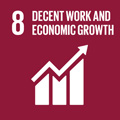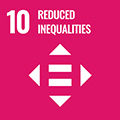- Docente: Laura Bottazzi
- Credits: 8
- SSD: SECS-P/01
- Language: English
- Moduli: Laura Bottazzi (Modulo 1) Luciano Messori (Modulo 2)
- Teaching Mode: Traditional lectures (Modulo 1) Traditional lectures (Modulo 2)
- Campus: Bologna
- Corso: Second cycle degree programme (LM) in International Relations (cod. 9084)
Learning outcomes
The course aims to give students a better understanding of causes and consequences of international trade and of the effects of trade policies; of the main approaches to international factor movements, organization of firms, and debates on globalization; of exchange rates and international capital markets; of the complex issues raised by the economic interdependence of nations
Course contents
This course is intended to use simple small open economy models to answer many important macroeconomic questions that arise in emerging markets and developing economies, particularly those regarding trade, monetary and exchange rate issues. We want to think in terms of simple models and grasp the fundamentals of open economy macroeconomics.
The course is divided in two modules. The first module introduces the most important theories of international trade and their predictions for consumers, firms, and governments. In particular, it addresses issues such as determinants of trade flows, gains from trade, protectionist policies and real determinants of capital flows.
The second module is organized in topics, including, among others, open macroeconomics, optimum currency areas, the European Union and the Euro experience, the historical and recent migration waves.
At the end of the course, students will have a sound foundation in international economics and they will be able to critically evaluate both micro and macro trade patterns, as well as policy issues.
Readings/Bibliography
P. Krugman, M. Obstfeld and M. Melitz (2018), International Economics: Theory and Politics. 11th Edition.
D. Salvatore (2012), Introduction to International Economics. 3rd Edition (4th Edition, 2019, as soon as available).
The first part of the course will be mostly based on Krugman's textbook and on lectures notes, The second part of the course will be mostly based on Salvatore’s book and on lectures notes.
Assessment methods
Frontal lessons. Student's active class participation is encouraged. Models will be discussed and developed in class. Particular attention will be devoted to the understanding of model background and empirical implications as well as discussion on policy issues.
Final written examination.
The written exam aims at testing the acquired knowledge of the theoretical concepts and the ability to interpret estimation results in the light of the underlying theory.
The written exam is closed book and it lasts 2 hours and 30 minutes. It is divided in three parts:
- 1.True , False, Uncertain (answer with concise motivation): 5 questions, 30 points. These questions will cover the first part of the course
- 2. Multiple choices: 8 questions, 30 points. These questions will cover the second part of the course.
- Open questions: 4 questions, 2 for each part of the course, 30 points.
In case online exams will be envisaged by the University of Bologna, the structure of the written exam is the same. The exam will be run through Zoom and Exams Online (EOL). Detailed instructions on how to manage and hand in the online exam are available on the course page on the VIRTUALE platform.
The maximum possible score is 30 cum laude, in case all answers are correct, complete and formally rigorous.
The grade is graduated as follows:
<18 failed
18-23 sufficient
24-27 good
28-30 very good
30 e lode excellent
To take the exam, you are required to enroll on Almaesami. Class attendance is strongly recommended to improve the productivity of the time spent studying this subject.
The student has the right to refuse the passing grade obtained only once.
Teaching tools
Blackboard, slides and touch screen.
Office hours
See the website of Laura Bottazzi
See the website of Luciano Messori
SDGs



This teaching activity contributes to the achievement of the Sustainable Development Goals of the UN 2030 Agenda.
